
views
Finding Live Auctions

Contact storage facilities in your area to find out when they host auctions. Search online to find storage facilities in your area. Call each facility one by one and ask when they host their abandoned unit auctions. After they give you the date and time, ask how many units are being auctioned off. Most storage facilities host auctions on abandoned units every 1-6 months, so jot the dates and times for each auction down and pick some auctions to attend. Generally speaking, you will have more luck finding a deal if there are a lot of units being auctioned off. If you have to choose between 2 auctions, pick the auction with the highest number of available units. Facilities typically wait until they have 10-20 abandoned units to host auctions. Larger facilities may host auctions every 2-3 months, while smaller facilities usually wait 4-5 months to host auctions. The exception is when the storage facility runs out of available units and needs to free up some space. These auctions are usually free, although larger auctions may require a small entry fee.
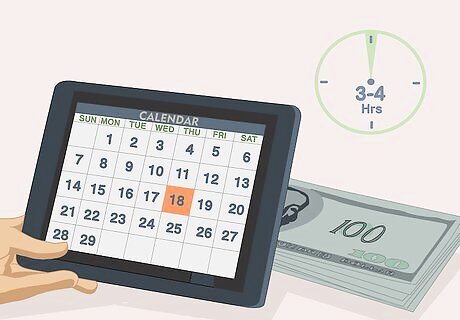
Set aside 3-4 hours for an auction and bring some cash. Most auctions take some time, so block off 3-4 hours on your calendar for the event. Take out as much cash as you’re comfortable spending at the auction. The price of abandoned units can range from $25-5,000, so only take the cash that you’re willing to spend. Most storage facilities only take cash payment for their units, but it’s still a good idea to only bid cash even if they accept credit cards or checks. It’s easy to get carried away when people start bidding and you get caught up in the moment, but sticking with a budget will ensure that you don’t overspend. The prices for storage units fluctuate wildly based on what people are willing to gamble on. On rare occasions, the prices can exceed $5,000. This happens when a unit appears to contain rare collectibles or expensive electronics.
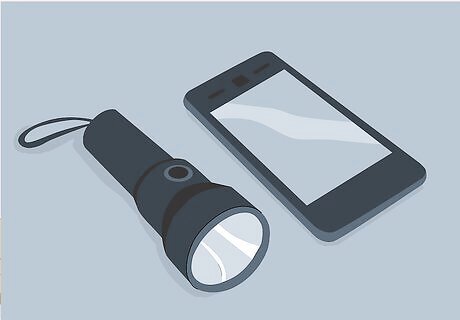
Take a flashlight and phone with you to make appraisal easier. You are typically not allowed to enter an abandoned storage unit or touch its contents. This means that you’ll need to rely on visual inspections from the edge of each unit’s doorway. Since storage units are dark, take a flashlight to see the items at the back more clearly. Bring a phone with you in case you need to look up the price of items in the unit before bidding starts. For example, if there is a box labelled “Beanie Babies 1994,” you can perform a quick online search with your phone to get an estimate for what the box is worth. Keep in mind, the box may not contain what’s on the label, but you can get a hint about what may be in there and decide if it’s worth the gamble. Bring some padlocks with you as well. If you end up buying a storage unit, you’ll need locks to secure your unit until you can pick the items up.

Show up on time and listen to the auctioneer’s instructions. Go to the facility’s main desk and ask where the auction is being held. Once everyone has shown up, listen to the auctioneer’s instructions regarding the format of the auction and the general rules. These are different from facility to facility, so listen carefully to avoid making illegal bids.Tip: The rules differ because every state has different laws regarding auctions and storage units. You typically are not allowed to touch the contents of an abandoned unit, enter an abandoned unit, or discuss bids with other attending bidders. Pay close attention to the fees and cleaning deposit instructions. Facilities typically charge fees on top of the final closing price. Most facilities also require a cleaning deposit of $50-100 to ensure that you clean the unit out after you remove the items. This deposit is returned after you clean the units you buy.
Looking for Auctions Online
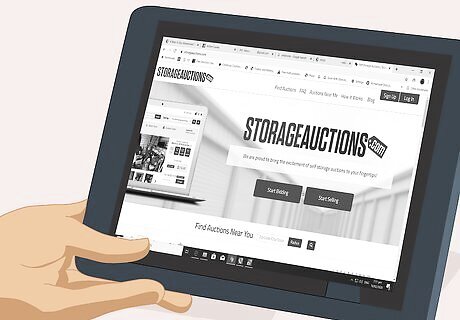
Go online to one of the popular storage auction sites and sign up. There are 2 major auction sites for abandoned storage units: Storage Auctions and Storage Treasures. Go to either of these sites and sign up for a buyer’s account by entering your name, address, and credit card information.Tip: Storage facilities that host auctions online do not host live auctions. If you’re trying to make this a full-time job, use a combination of online bidding and live auctions to find good deals on units. These sites are free to join. You only enter a credit card number to pay the auction site’s fees when you buy a unit. These fees are typically $10-15 a unit. You can visit Storage Auctions at https://storageauctions.com/ and Storage Treasures at https://www.storagetreasures.com/.
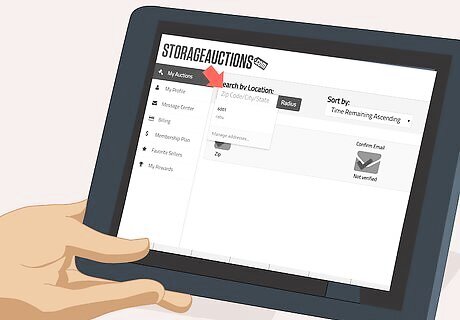
Search for units in your area using the site’s search function. Go to each site and enter your location into the search bar at the top. This will pull up a map of units being auctioned off in your area. Even though you’re buying the unit online, you still need to show up to the facility to pay for the unit and collect its contents, so start by looking at the auctions closest to where you live. Any auction that is currently taking place will have a large timer on it ticking down to the end of the auction.
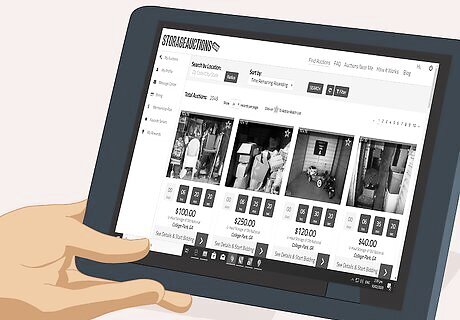
Sort your search if you’re looking for something specific. While nobody knows what the entire contents of a storage unit, the facility usually lists the type of goods that appear to be in the unit. If you’re looking to acquire or sell a particular item, use the filter function on your search to weed out search results you aren’t interested in. You’ll only be able to search and filter out items that are obvious from standing in the doorway of the unit. For example, furniture, power tools, and bags of clothes tend to be fairly obvious items just from a precursory glance.
Bidding on Units
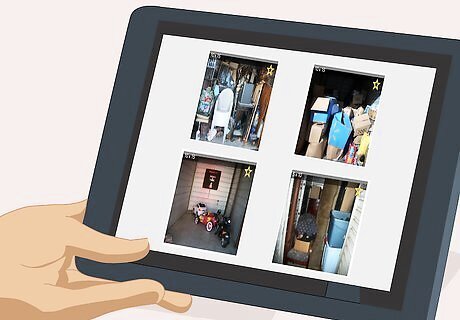
Inspect each unit to assess its contents. A big unit with lots of items is not necessarily valuable and a small unit with a few boxes isn’t necessarily worthless. Online, inspect the photos carefully to assess them. In person, use your flashlight to check each section of the unit once the auctioneer opens the door. Look for labels on boxes and assess the shape of bags and boxes to determine what may be inside.Tip: Buying storage units is basically gambling. You won’t know everything you’re buying when you bid, so be comfortable with losing some money if the contents turn out to be worthless. However, there may be jewelry, collectibles, or expensive goods hidden in some of the units! Cheap items, like toys, old TVs, broken furniture, and clothes are generally not worth buying. Online, you may not have much to go on since there are usually only 2-5 photos for each auction. Inspect the images carefully to look for hints about what may be hiding in the background.
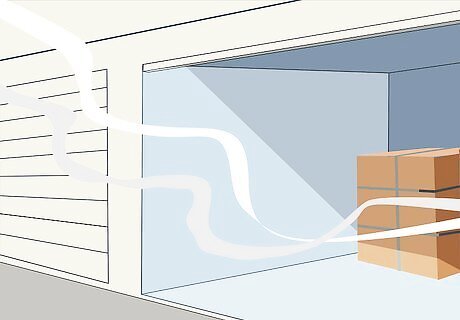
Pay attention to the smell of a room if you're attending an auction in person. Take a strong whiff of the unit from the doorway. If the room smells like smoke, rotted food, or urine, the items may need to be scrapped. You won’t be able to sell anything that has a permanent odor, even if the goods in the unit would normally be expensive. The opposite of this is equally true—a room with no odor has likely been well taken care of and is more likely to have sellable goods inside. You won’t be able to do this if you’re bidding online. This is one of the reasons that online bids tend to be less competitive than live auctions in terms of bidding.
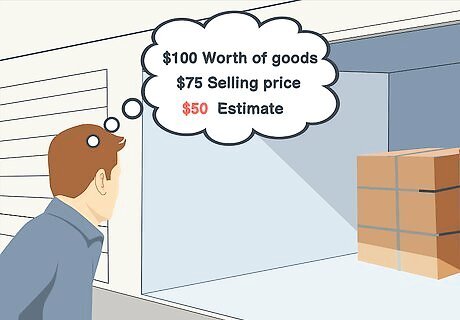
Estimate the value of the room and keep it in mind. Once you inspect the contents of a room, make an educated guess about what the contents may be worth in resale. If there looks like there’s at least $100 worth of goods in the room, and you think you can make at least $75 selling them, set your estimate at $50. Keep this number in the back of your mind as you bid to set a limit for yourself. For example, if you think a room can get you roughly $75 in resale and you get outbid past your personal limit of $50, don’t place another bid. Give up on the unit and try again with the next one. This can be tricky to do if you’re buying online and the photos aren’t particularly good.
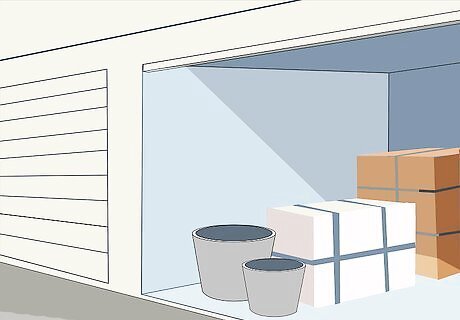
Look for well-kept units that appear to be carefully organized. If there are ripped bags thrown all over the place and items appear to be tipped over, the previous owner of the unit has likely already taken everything valuable and left the rest to be auctioned. However, the unit is more likely to have expensive items in them if boxes are beautifully organized, bags are carefully stacked, and everything looks like it was handled with care.
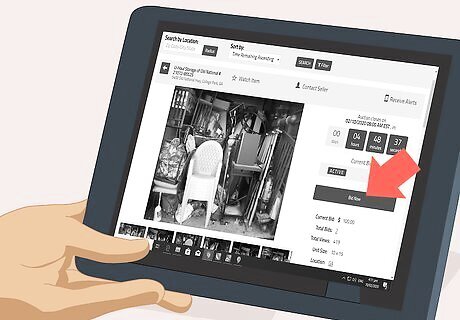
Bid on a unit until you buy it or drop out of the bidding. For in-person auctions, once everyone has inspected the unit, bidding opens up. Respond to the auctioneer by announcing the price you’re willing to buy the unit for. Once you’re outbid, the auctioneer will ask for the next bid level. Continue bidding until you purchase the unit or decide that it is no longer worth the asking price. If you’re bidding online, simply press the “place bid” button the auction page to place your bid. Only bid on units that you’re willing to purchase. Do not bid for the sake of bidding. You may end up buying something you don’t really want. If this is your first time doing this, bid conservatively and study how other people bid to get a sense for the process. It’s perfectly fine to skip bidding on a unit if it looks worthless.
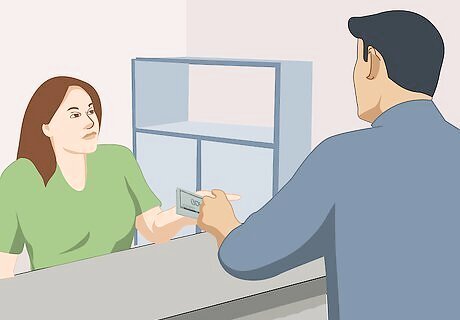
Pay for the units you buy and collect your goods. For each bid that you win, you’ll pay the auctioneer as soon as the auction ends. If you won the auction online, drive to the storage facility and pay the clerk behind the desk. You’ll receive the keys to the unit or be asked to lock it yourself. Collect the items in the storage units you bought and return the unit to the facility. You are typically given a 1-2 day grace period to collect your things. This is a real pain if you don’t have a truck. If you have a large number of items, rent a moving truck to take your new items. Be sure to sweep and clean the unit before returning it to the facility so that you can get your cleaning deposit back. When it comes to larger storage units, it is common practice for the winning bidder to rent the storage unit they bought for 1 month to give themselves time to find storage space or unload some of the goods.
Earning Money on the Goods
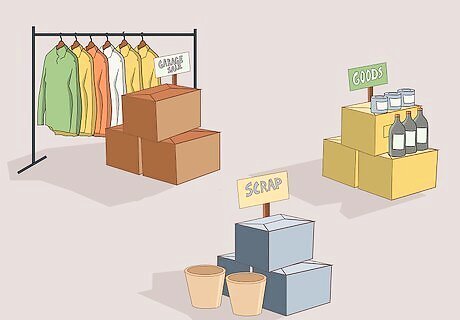
Sort through the goods after you purchase the unit. Start by going through every box, purse, and container to see if there are items inside. Then, if you want to keep anything, set it aside. Sort your items based on where you’re going to sell them and throw out any damaged or worthless items. This will give you a better sense for how you’re going to go about making your money. For example, you may have one pile for a garage sale, one pile for the scrap yard, and one pile of goods that you’re going to sell individually online.

Have a place to store your goods while you work to sell them. Many people that buy abandoned units for a living rent a warehouse or large storage unit to store their goods. For your first couple of buys, feel free to store the goods in your home, basement, or garage while you work out where to sell the items. You can always keep some of things you buy from the unit if you’d like!

Host a garage sale to get rid of a lot of everyday items. One of the easiest ways to get rid of your things is to host a garage sale. Wash the clothes, wipe down furniture, and clean other objects. Set signs out all over your neighborhood listing the date and location of the sale. Post this information on social media as well. On the day of the sale, set your goods out in front of your home or open the garage door and sell to the people that show up. This is the best option for getting rid of items that people use regularly but don’t have a high resale price. This includes clothing, kitchenware, exercise equipment, and holiday decorations.

List larger items in decent condition for sale online. Selling online is the best way to make money on items that may fetch a higher price, like power tools, cameras, furniture, and sporting equipment. Take high-quality photos of your goods and list them on eBay, Craigslist, and Facebook Marketplace. Wait for interested parties to contact you and meet with them to sell them your goods.
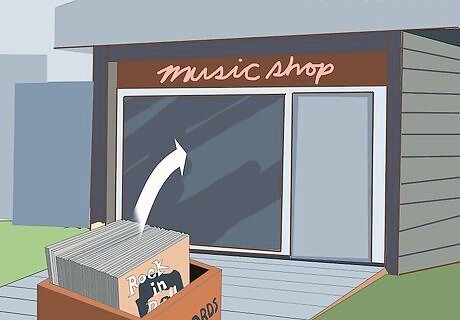
Take specialty items and collectibles to shops that buy them. If you have unique items, collectibles, or jewelry, take them to a shop that specializes in these goods and sell them. For example, if you have a box of vinyl records, take them to a music shop. Video games can be taken to a game store, and comic books can be sold to comic shops. Take jewelry to get appraised before selling it. You never know if you have something truly special on your hands!
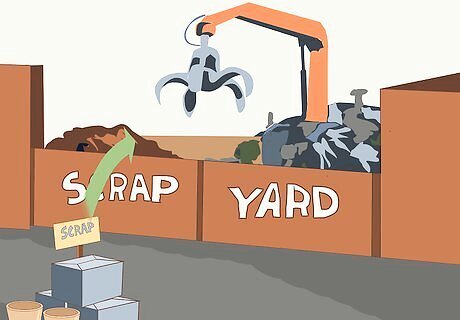
Sell broken or worthless items to scrap yards or throw them out. Anything that can be turned into scrap metal, like broken washing machines or bed frames, can be sold for scrap at a scrap yard for a small profit. Find a scrap yard near you and haul your things over to sell them for a few bucks. Any other broken or worthless items are simply going to take up space. Donate what you can to local charities, and throw the rest of it out. A lot of the items that you get from storage units aren’t going to be worth anything. These items are only going to take up space in your storage area, so don’t waste your time trying to sell them.




















Comments
0 comment